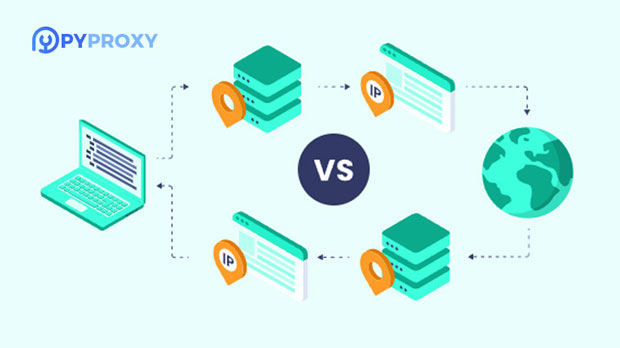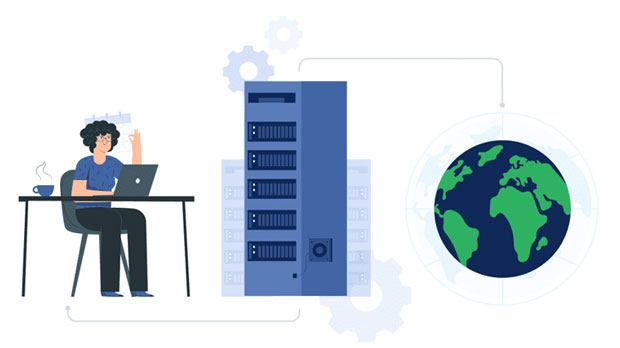When it comes to online privacy, data security, and accessing restricted content, using a socks5 proxy service can be an effective solution. However, selecting and purchasing the right dedicated SOCKS5 proxy service can be a challenge due to the large number of options available. This article provides a comprehensive guide on how to choose and purchase a dedicated SOCKS5 proxy service, emphasizing key factors such as reliability, performance, security, and cost-effectiveness. Whether you're a business owner, developer, or individual user, understanding these elements will ensure you make an informed decision that suits your specific needs. 1. Understand the Basics of SOCKS5 ProxyBefore diving into the selection process, it's important to understand what a SOCKS5 proxy is and how it works. A SOCKS5 proxy is an internet protocol that relays traffic between your device and the internet via a third-party server. This protocol allows for various forms of traffic (like HTTP, FTP, and others) to pass through, ensuring anonymity and security. socks5 proxies are known for their flexibility, support for a wide range of protocols, and ability to bypass geo-restrictions without affecting the speed of your internet connection.Unlike standard HTTP proxies, SOCKS5 proxies do not modify data packets or headers, making them more secure and efficient. They also allow users to connect to any type of service, whether it’s web browsing, torrenting, or gaming, while maintaining anonymity.2. Key Factors to Consider When Choosing a Dedicated SOCKS5 ProxyWhen it comes to selecting a dedicated SOCKS5 proxy, several factors need to be considered. Here are some of the most critical aspects:2.1. Reliability and StabilityReliability is crucial when selecting a SOCKS5 proxy service, as you need a stable connection that will not interrupt your online activities. Look for providers who offer a high uptime guarantee, ensuring minimal disruptions. Additionally, check user reviews and testimonials to gauge the provider’s reputation for reliability. A dedicated proxy service is typically more stable than shared proxies, but it’s essential to verify that the provider has a good track record.2.2. Speed and PerformanceThe performance of a SOCKS5 proxy is another key consideration. Proxy speed can vary depending on the server’s location, the amount of traffic on the network, and the type of proxy (dedicated or shared). Dedicated SOCKS5 proxies generally offer better performance because they are not shared among multiple users. This ensures that your internet connection will not be slowed down by other users' activities. Make sure to test the speed of the proxy server before purchasing, and ensure that it meets your requirements for activities like streaming, gaming, or heavy browsing.2.3. Security and EncryptionOne of the primary reasons for using a SOCKS5 proxy is to ensure online anonymity and security. When selecting a proxy service, you should verify that it offers robust security features, such as strong encryption for data transmission. Additionally, ensure that the provider has a no-logs policy, meaning they do not store records of your activities. This is especially important if you are concerned about maintaining privacy while browsing sensitive information or accessing restricted websites.2.4. Geographic Location of ServersThe geographic location of the proxy servers is also a significant factor to consider, as it can affect both the speed and the ability to bypass geographical restrictions. If you need to access content that is only available in certain countries, selecting a provider with servers in those regions will be essential. Moreover, proximity to the server can reduce latency, resulting in a better overall experience.2.5. Price and Payment OptionsPrice is always a consideration when choosing a service. Dedicated SOCKS5 proxies tend to be more expensive than shared proxies due to the dedicated resources provided. However, the cost is often justified by the superior speed, security, and reliability offered. Ensure that the price is in line with your budget and the level of service you require. Additionally, check for transparent pricing structures and reliable payment options, including support for cryptocurrency payments if privacy is a concern.3. Evaluating Provider Features and SupportWhen purchasing a dedicated SOCKS5 proxy, it’s crucial to look beyond the basic features. Evaluate the additional services and support the provider offers, such as:3.1. Customer SupportGood customer support is essential for resolving issues quickly. Choose a provider that offers 24/7 support through various channels, including live chat, email, and phone. It's a good idea to test their responsiveness by reaching out with a few questions before committing to the service.3.2. CustomizabilitySome proxy providers offer customizable features, such as IP rotation, automatic failover, and more. These features can be valuable, especially for users who need to perform large-scale scraping, market research, or other advanced online tasks. If these features are important to you, ensure that your chosen provider can accommodate your needs.3.3. Additional Security FeaturesSome SOCKS5 proxy providers may offer additional security features such as DNS leak protection, IPv6 support, and webRTC leak protection. These features further enhance your privacy and help ensure that your real IP address is not exposed during your online activities.4. How to Purchase a Dedicated SOCKS5 ProxyOnce you have selected a provider that meets your requirements, it’s time to proceed with the purchase. Here are the steps to follow:4.1. Choose a PlanMost SOCKS5 proxy providers offer several plans based on the number of IPs, bandwidth, or duration of service. Choose the plan that best fits your needs, keeping in mind that a longer-term commitment might offer savings. If you’re unsure, many providers offer a trial period, so you can test the service before making a final decision.4.2. Provide Your InformationDuring the purchase process, you will be required to provide basic information, such as your email address and payment details. Make sure to choose a payment method that is secure and convenient for you. Many providers accept credit cards, PayPal, or even cryptocurrencies, which can offer enhanced anonymity.4.3. Set Up the ProxyAfter purchasing your dedicated SOCKS5 proxy, you will receive the necessary details, such as the proxy server address, port number, and authentication credentials. Follow the provider’s setup guide to configure the proxy on your device. The process usually involves inputting these details into your browser’s or application’s proxy settings. If you encounter any issues, reach out to customer support for assistance.5. Final Considerations and Best PracticesWhen using a SOCKS5 proxy, it’s important to follow some best practices to maximize security and performance:- Regularly check the status of your proxy connection to ensure it remains active.- Use strong authentication methods to prevent unauthorized access to your proxy.- Avoid using free or unreliable proxy services, as they may compromise your security and data.- Monitor your usage to ensure that the proxy remains within the limits of your chosen plan, as overages could result in additional charges.By keeping these considerations in mind, you can make an informed decision when choosing and purchasing a dedicated SOCKS5 proxy service, ensuring a secure, fast, and reliable online experience.In conclusion, selecting the right dedicated SOCKS5 proxy service is a critical step toward ensuring your privacy and security online. By evaluating factors such as reliability, speed, security, and cost, and by understanding your specific needs, you can make the best choice for your online activities.
Jan 03, 2025
![arrow]()



















































